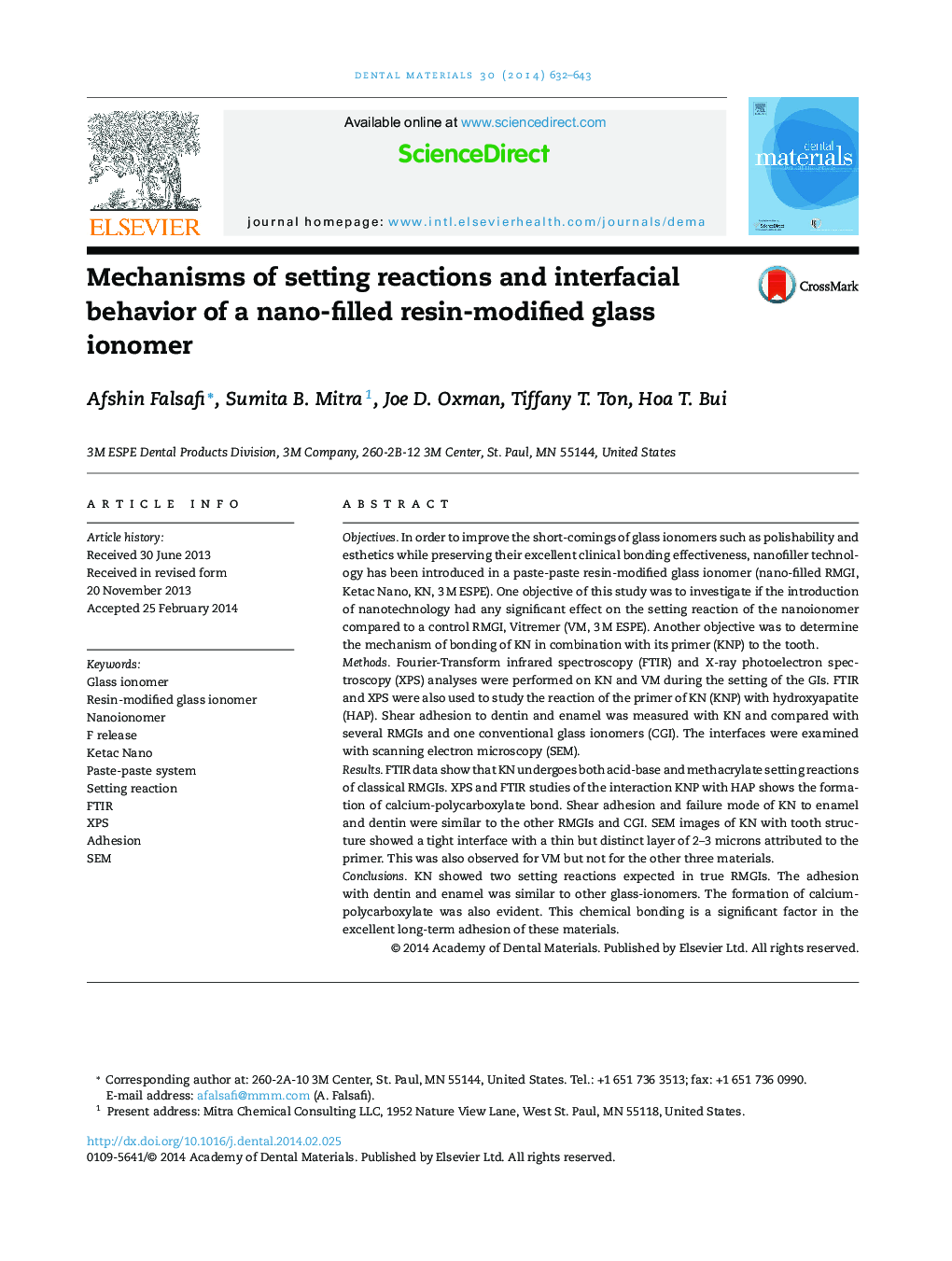| کد مقاله | کد نشریه | سال انتشار | مقاله انگلیسی | نسخه تمام متن |
|---|---|---|---|---|
| 1420935 | 986388 | 2014 | 12 صفحه PDF | دانلود رایگان |
ObjectivesIn order to improve the short-comings of glass ionomers such as polishability and esthetics while preserving their excellent clinical bonding effectiveness, nanofiller technology has been introduced in a paste-paste resin-modified glass ionomer (nano-filled RMGI, Ketac Nano, KN, 3 M ESPE). One objective of this study was to investigate if the introduction of nanotechnology had any significant effect on the setting reaction of the nanoionomer compared to a control RMGI, Vitremer (VM, 3 M ESPE). Another objective was to determine the mechanism of bonding of KN in combination with its primer (KNP) to the tooth.MethodsFourier-Transform infrared spectroscopy (FTIR) and X-ray photoelectron spectroscopy (XPS) analyses were performed on KN and VM during the setting of the GIs. FTIR and XPS were also used to study the reaction of the primer of KN (KNP) with hydroxyapatite (HAP). Shear adhesion to dentin and enamel was measured with KN and compared with several RMGIs and one conventional glass ionomers (CGI). The interfaces were examined with scanning electron microscopy (SEM).ResultsFTIR data show that KN undergoes both acid-base and methacrylate setting reactions of classical RMGIs. XPS and FTIR studies of the interaction KNP with HAP shows the formation of calcium-polycarboxylate bond. Shear adhesion and failure mode of KN to enamel and dentin were similar to the other RMGIs and CGI. SEM images of KN with tooth structure showed a tight interface with a thin but distinct layer of 2–3 microns attributed to the primer. This was also observed for VM but not for the other three materials.ConclusionsKN showed two setting reactions expected in true RMGIs. The adhesion with dentin and enamel was similar to other glass-ionomers. The formation of calcium-polycarboxylate was also evident. This chemical bonding is a significant factor in the excellent long-term adhesion of these materials.
Journal: Dental Materials - Volume 30, Issue 6, June 2014, Pages 632–643
